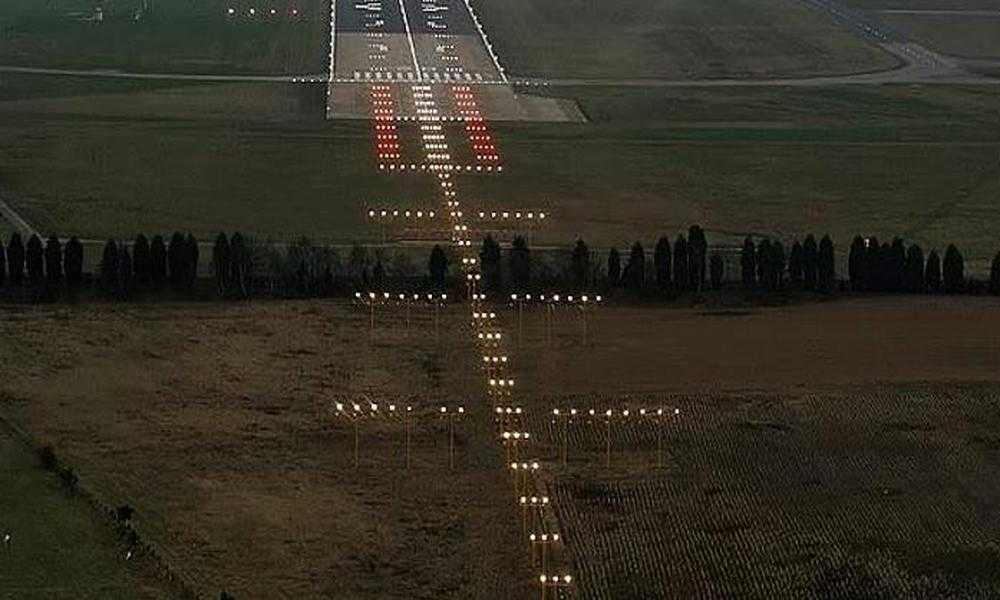
How Airfield Ground Lighting Enhances Airport Operations and Efficiency
 Posted On
Posted On When you step onto an airport runway at night, the first thing that guides you safely to your destination is not the control tower or the pilot’s expertise but the humble yet vital system of airfield ground lighting. These systems are more than just a set of lights; they are the unsung heroes of aviation, ensuring the safety and efficiency of airport operations, especially during low-visibility conditions. In this blog, we will explore how airfield ground lighting enhances airport operations and efficiency.
Guiding Aircraft Safely
One of the primary functions of airfield ground lighting is to provide clear guidance to pilots during takeoff, landing, and taxiing. Runway edge lights, taxiway lights, and approach lighting systems play a crucial role in ensuring that aircraft follow designated paths, avoiding runway incursions and other potentially catastrophic incidents.
For instance, runway edge lights delineate the runway’s borders, making it easy for pilots to stay on course even in poor weather conditions. Similarly, approach lighting systems help pilots gauge their altitude and approach angle, enabling them to make precise landings. These lights are carefully calibrated to provide the right visual cues, enhancing safety for everyone on board.
Mitigating Low Visibility
Weather can be unpredictable, and low visibility due to fog, rain, or snow can disrupt airport operations. During such conditions, airfield ground lighting becomes indispensable. High-intensity runway and taxiway centerline lights, often referred to as CAT III lighting, allow aircraft to operate safely in extremely low-visibility conditions. These systems use advanced technology to pierce through fog and provide pilots with a clear path to follow.
Additionally, stop bar lights at runway intersections act as a traffic signal for aircraft, preventing runway incursions. These lights are particularly crucial during low visibility, ensuring that aircraft do not cross active runways without clearance.
Enhancing Efficiency
Efficiency is paramount in the aviation industry, and airfield ground lighting contributes significantly to this aspect. Precision approach path indicators (PAPIs), which consist of a row of lights that indicate if an aircraft is on the correct glide path, help pilots make smooth descents and landings. By doing so, they reduce the need for go-arounds and minimize delays, enhancing the overall efficiency of airport operations.
Moreover, airfield ground lighting allows airports to extend their operational hours. With proper lighting systems in place, airports can accommodate nighttime flights and optimize their capacity, ultimately boosting revenue and serving more passengers.
Saving Costs and Environmental Impact
Airfield ground lighting has evolved to become more energy-efficient and environmentally friendly. LED lighting technology has replaced traditional incandescent lights in many cases, reducing energy consumption and maintenance costs. LEDs are not only more energy-efficient but also have a longer lifespan, reducing the frequency of bulb replacements.
Furthermore, airports are increasingly adopting smart lighting control systems, which can adjust lighting intensity based on real-time weather conditions and aircraft movements. This not only saves energy but also reduces light pollution in the surrounding areas, contributing to a more sustainable aviation industry.
Ensuring Compliance and Safety
The aviation industry is highly regulated, and airports must adhere to strict safety standards. Airfield ground lighting plays a critical role in helping airports meet these requirements. By providing clear visual cues and maintaining high standards of safety, airports can avoid costly fines and penalties for non-compliance.
Additionally, airfield ground lighting aids in emergency response. In the event of an aircraft emergency, the runway and taxiway lights can guide emergency vehicles to the scene quickly and safely, potentially saving lives.
Conclusion
In the realm of aviation, where safety and efficiency are paramount, airfield ground lighting stands as a silent sentinel, ensuring that flights take off and land without a hitch. These lighting systems guide aircraft safely, mitigate low visibility conditions, enhance operational efficiency, save costs, reduce environmental impact, and ensure compliance with safety standards. Without them, the modern aviation industry as we know it would not be possible.






